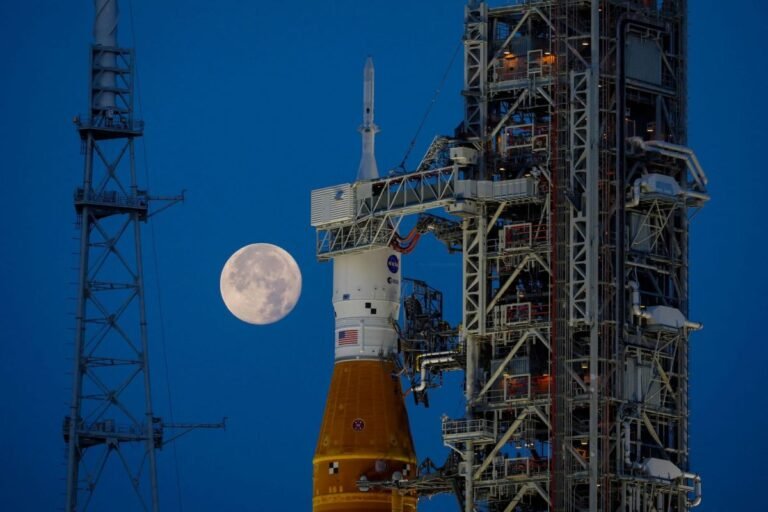A stealth startup led by former Blue Origin executives focused on harvesting resources from the moon has quietly closed a major new round of funding, according to regulatory documents.
Interlune, a startup that’s been around for at least three years but has made almost zero public announcements about its technology, has raised $15.5 million in new funding and aims to close another $2 million. A spokesman for Interlune declined to comment for this story.
This is the first public indication that the company has closed any funding from its $1.85 million seed round in 2022.
Much of what is known about the startup was reported by GeekWire last October, when Interlune CTO Gary Lai briefly described the startup during a speech at Seattle’s Museum of Flight: “We intend to be the first company to harvest natural resources from the moon for use here on Earth,” he reportedly said . “We are building a completely new approach to extracting these resources, efficiently, economically and also responsibly. The goal is really to create a sustainable economy in space.”
Lai is an aerospace engineer whose resume includes a 20-year stint at Blue Origin, where he eventually became chief architect for space transportation systems, including launch vehicles and lunar landers. Interlune is led by Rob Meyerson, an aerospace executive who was president of Blue Origin for 15 years. Meyerson is also a prolific angel investor, with investments in well-known hardware startups including Axiom Space, Starfish Space, Hermeus and Hadrian Automation.
The filing with the US Securities and Exchange Commission also lists attorney H. Indra Hornsby as an executive of the company. Hornsby previously held the position of general counsel at BlackSky and Spaceflight Industries, and also worked as an executive vice president at Rocket Lab.
What little else is known about Interlune’s technology comes from an abstract of a small SBIR the startup was awarded last year by the National Science Foundation. As part of this award, the company said it will aim to “develop a key technology for using lunar resources in situ: the ability to sort lunar dirt (lunar regolith) by particle size.”
“By enabling the sorting of raw lunar regolith into multiple streams by particle size, the technology will provide suitable raw materials for lunar oxygen extraction systems, lunar 3D printers and other applications.” says the summary.
A growing number of space startups are focusing on what is known as in-situ resource utilization (ISRU), or the collection and conversion of space resources into valuable commodities. Much of this is driven by NASA’s stated priority of building a long-term human outpost on the moon through the Artemis program: The agency recognizes that staying in space long-term will require the ability to produce materials locally — whether it’s building roads. they produce breathable air or even make rocket propellants.
But it’s not just startups trying to commercialize ISRU technology. Last year, Blue Origin announced that it had made solar cells and transmission cables from a material that is chemically identical to lunar regolith.
Inside February 2023 announcement on technology, Blue Origin said, “Learning to live from Earth – on the Moon and on Mars – will require extensive collaboration across the ISRU community.” The phrase is repeated in Interlune’s summary: “Using the Moon’s resources is a disruptive capability that will allow missions there to ‘live off the ground,’ making the development of this technology important to government agencies and industry.”
